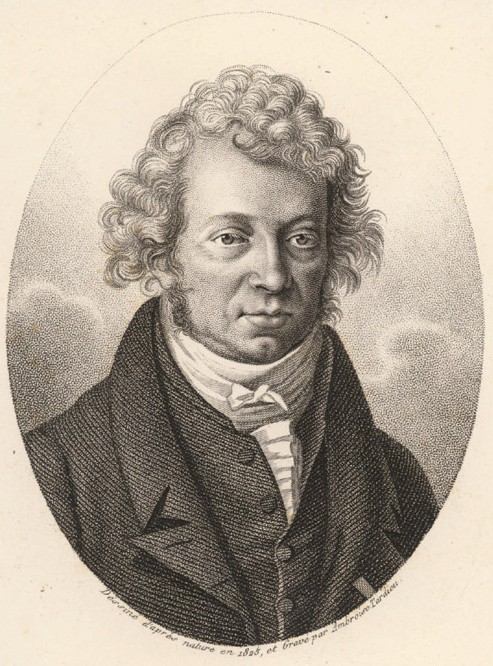
On this day, the French physicist and mathematician André-Marie Ampère was born in Lyon, France. Recognized as a founder ofelectrodynamics— or what is today known as electromagnetism — Ampère helped establish a theory defining the relationship between electricity and magnetism. We continue to celebrate the importance of his discovery in creating the groundwork for future developments in both of these fields.
Who Was André-Marie Ampère?
On January 20, 1775, Jean Jacques Ampère and his wife Jeanne Antoinette Desutières-Sarcey Ampère welcomed their second child: André-Marie Ampère. Ampère’s father was a prosperous businessman who valued the idea of “education direct from nature” and his mother was noted as a devout Catholic woman.
As a child, Ampère quickly developed a passion for learning, particularly within the fields ofmathematics and geometry. With access to his father’s library, he began teaching himself advanced mathematical books by the age of 12. One obstacle he encountered amidst these available texts was that many were written in Latin. This prompted Ampère to begin taking Latin lessons, which enabled him to learn the language in just a few weeks.

André-Marie Ampère.
During the French Revolution, tragedy struck Ampère’s family after political disagreements resulted in the arrest and execution of his father, who had been required to become a justice of peace by the new revolutionary government. The death was a devastating loss for Ampère, who halted his studies for several months before meeting his future wife, Julie Carron. At this time, Ampère began working as a mathematics tutor and later became an appointed professor of chemistry and physics at Bourg École Centrale.
The death of his wife in 1803 led Ampère to move to Paris, where shortly after he accepted a tutoring post at École Polytechnique. He became a professor of mathematics at the school in 1809 — a position that he held for nearly 20 years. During this time, Ampère also taught philosophy and astronomy courses at the University of Paris.
The Foundations of Electromagnetism
In 1820, during a meeting of the French Academy of Sciences, Ampère and other members were introduced to the groundbreaking finding from Hans Oersted’s experiments. Oersted discovered that a magnetic needle was deflected by an electric current that was adjacent to the needle. Driven by his innate interest in learning, Ampère sought to establish a theory that could explain how electricity and magnetism interacted with one another.
His experiments highlighted the attraction that occurs between two parallel current-carrying wires when the direction of the currents is the same; when the direction is opposite, the two wires repel one another. With these results, Ampère helped to lay the foundations for electrodynamics, or what we refer to today aselectromagnetism.
In generalizing his results, Ampère also developed the principle known asAmpère’s law, which relates a magnetic field to its electric current source. The law states that the mutual action of two lengths of current-carrying wire is in direct proportion with the lengths of the wire and the currents’ intensities. This same principle was also applied to magnetism.
Notable Honors
Ampère’s influential contributions in the field of electromagnetism prompted his election as a Foreign Member of the Royal Society in 1827. The following year, he was elected a foreign member of the Royal Swedish Academy of Science. To honor Ampere’s role as afounder of electrodynamics, the standard (SI) unit of electric current, theampere, was named after him.



Comments (0)